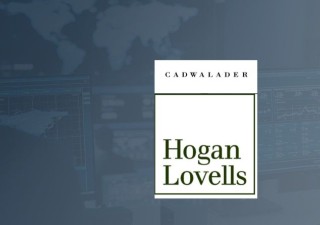Discovery Camps application mark allowed to proceed
30 April 2020
 Image credits: The Wall Street Journal
Image credits: The Wall Street Journal
.jpg)
.jpg)
The applicant, A-Star-Education Discovery Camps, applied for the application mark in Classes 9, 16 and 43. The opponent relied on several of its earlier trademarks in the opposition, including The Discovery Channel, as early as 1992, in the same, and other, classes.
It is noted that the opponent does not have any registration for the plain word “Discovery” on its own. For the purposes of this opposition, the opponent’s mark shown left is taken to be the primary earlier trademark.
In order to succeed in an opposition under Section 8(2)(b), the opponent must show a) similarity of marks, b) similarity of goods and c) likelihood of confusion arising from the two similarities. The distinctiveness of a mark is also an important factor in the assessment of similarity.
In the comparison of the similarity of marks, similarity is assessed from three aspects – the visual, the aural and the conceptual aspects – in order to make an assessment as to whether the marks are overall more similar or dissimilar.
The Principal Assistant Registrar found that the word “Discovery” in the opponent’s earlier trademarks to be of low distinctiveness as it is a common dictionary word which bears the meaning of making a finding that no one else has known about before, a breakthrough of sorts. This kind of word is likely “the sort of word in which traders would like a monopoly.” Further, it was noted that there are numerous registrations in different classes on the Register bearing the word “Discovery” either as part of the marks or on its own. This shows that other traders might legitimately wish to use the word “Discovery” to describe their goods or services.
The application mark also has the word “Discovery” featuring as the more prominent component in the mark. Where there is a common component in the competing marks and this common component is of low distinctiveness, there would be reluctance to find similarity between the marks and to grant a monopoly over components which other traders may legitimately wish to use as part of their own trademarks.
On visual similarity, the Principal Assistant Registrar considered that the opponent’s Primary Earlier Trademark has a distinctive feature which is the globe device that is elided with and clearly forms part of the capital letter D in the word “Discovery.” This device constitutes a material part of the whole word “Discovery” and cannot be ignored. In contrast, the application mark is presented in an angled manner and written in cursive with a stylized flourish to underscore the word “Discovery.” The distinctive feature of the device in the opponent’s Primary Earlier Trademark and the presentation and stylization of the application mark reduces the visual impact of similarity of the word “Discovery” and as such, the Principal Assistant Registrar found the marks more dissimilar than similar.
With regard to aural similarity and conceptual similarity, the Principal Assistant Registrar found that the marks were more similar than dissimilar. However, the aural and conceptual similarity of the marks reside in the word “Discovery” which has low distinctiveness.
On goods-similarity, the Principal Assistant Registrar found identity in the Class 9 and 16 goods. The opponent did not have a registration in Class 43, only registrations in Classes 39 and 41. The Principal Assistant Registrar, however, found a subset of services within the opponent’s Class 39 specification which although not identical, overlapped in a meaningful and complementary manner with the applicant’s Class 43 services. Thus, it was concluded that there is some similarity of services.
Overall, the Principal Assistant Registrar considered that the marks were more similar than dissimilar but concluded that the word “Discovery” is of low technical distinctiveness by virtue of its descriptive connotation to the goods/services of the earlier trademarks. Therefore, when considering all the facts and circumstances, the Principal Assistant Registrar found that a likelihood of confusion did not exist. The Principal Assistant Registrar considered these factors which led to the conclusion: the distinct feature of the D-plus-globe device in the opponent’s Primary Earlier Trademark, the nature of the goods/services which required a greater degree of fastidiousness and attention on the part of prospective purchasers when buying the goods, the consumers who would pay more attention and care in their choice of the goods/services, and in particular, the strong reputation of the opponent arising from the widespread and constant exposure it has on television.
Although the opponents failed on the ground of opposition on well-known marks, the Principal Assistant Registrar found that the opponent’s earlier marks were well known in Singapore. However, the Principal Assistant Registrar was unable to make a similar finding that it was “well known to the public at large” based on the opponent’s evidence.
The opponent did not succeed on all the grounds of opposition and the “Discovery Camps” application mark was allowed to proceed to registration.
Johnny Chan






